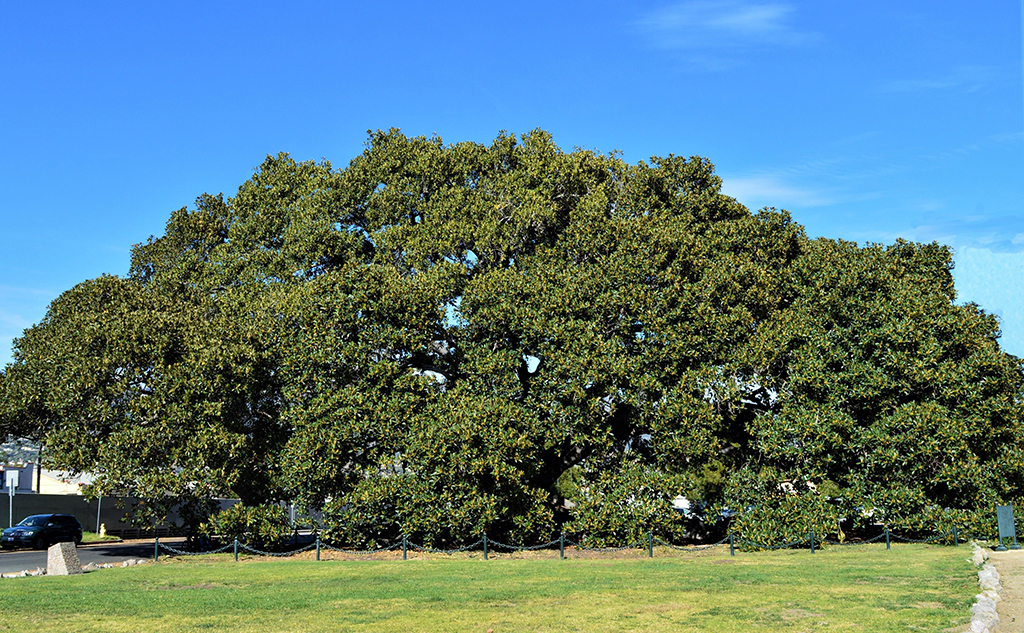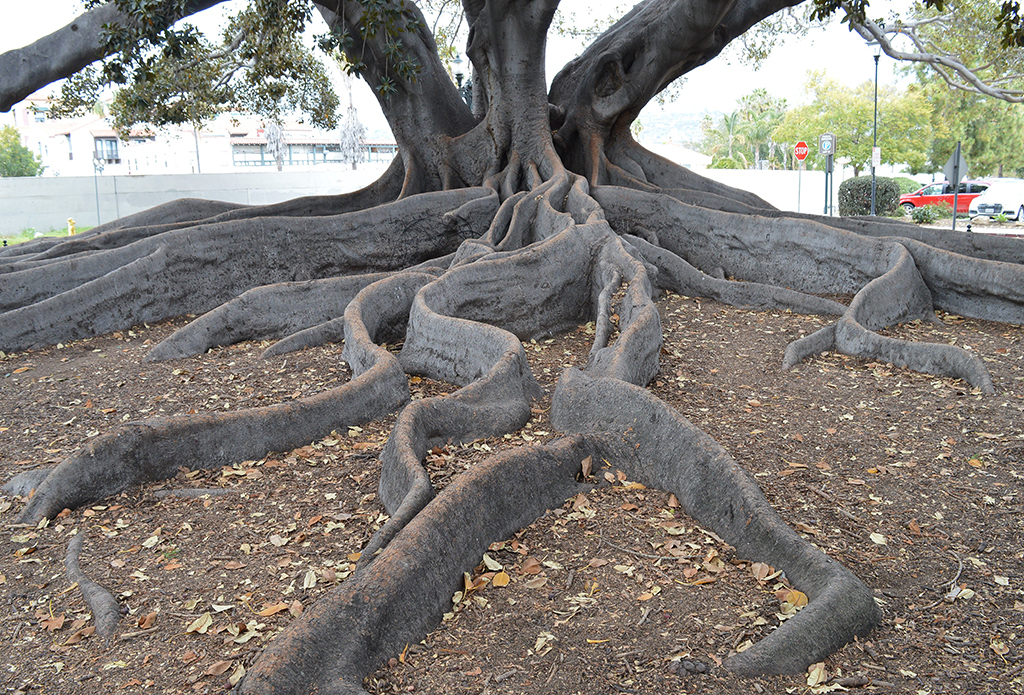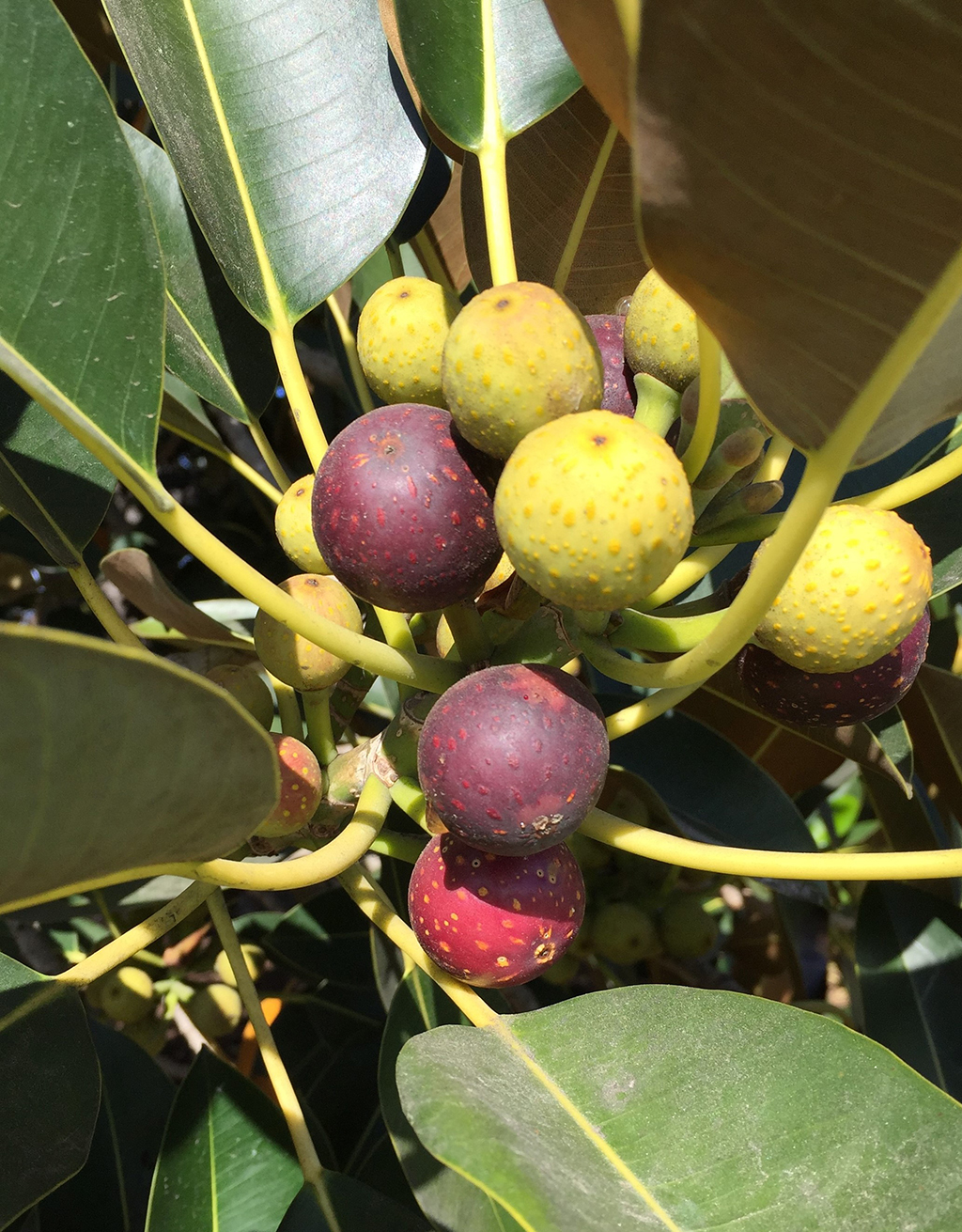Santa Barbara Beautiful Tree of the Month – March 2020

Without a doubt, Santa Barbara’s most famous tree is the Moreton Bay Fig tree located on the grounds of our historic train station. This huge tree has been recognized throughout most of its life as the largest of its kind in the continental United States. One in Glendora recently surpassed it in height, but our tree, 75 feet tall, still has the widest branch spread – over 175 feet!
In 1876, this magnificent tree, then just a sapling, was brought to Santa Barbara by an Australian sailor. In 1877, it was planted at the corner of West Montecito Street and Chapala Street. It is now certainly over 144 years old and is still healthy for its age, and growing.
The Moreton Bay Fig is native to eastern Australia and adjacent Lord Howe Island. Its common name comes from the Moreton Bay region of Queensland. In its native habitat, it can reach heights of 200 feet and live over 200 years. In our area, it usually grows to less than 100 feet tall, but should live in excess of 150 years.
In addition to its immense size at maturity, the Moreton Bay Fig is remarkable for its enormous “buttress roots” which extend outward from the trunk a great distance – these look like the tentacles of a giant octopus. Not true roots, these structures are actually extensions of the trunk itself and provide lateral stability for the massive tree.
Its thick and shiny green leaves (4-9 inches long and 3-5 inches wide) are dark green on top and rusty colored underneath when mature. Its bark is initially a light gray and smooth – this will become darker and rougher with age.
The Moreton Bay Fig is one of the largest of the evergreen fig species. Surprisingly, it is in the same plant family as the commercially cultivated (and much smaller) edible fig, the fruits of which are readily available in our markets.
Oddly enough, the Moreton Bay Fig has diminutive fruits that are much smaller than those of the edible fig, being only ¾ to 1 inch in diameter. Yet, from such little fruits, great trees can grow! The oval (to round) fruits starts greenish-yellow in color, then ripen to a dark purple. Their flesh can be sweet, but their coarse seeds are unpalatable to humans, so they are not generally harvested – though they are readily eaten by birds. All fig fruits are, in fact, inverted flower clusters encased in flesh and skin; these are pollinated exclusively by the tiny fig wasp who manages to squeeze inside through an equally tiny opening in the blossom end.
The botanical name for the Moreton Bay Fig is Ficus macrophylla. The genus name, “Ficus”, is the Latin name for the edible fig; the specific epithet, “macrophylla”, is also Latin and means “large-leaved”.
This outstanding tree grows well in our Mediterranean climate, provided it has a source of water, either through irrigation or subterranean water. It does not seem to have any serious insect or disease problems. Understandably, this is a tree that needs a very large area in which to grow. Consequently, it is most suitable for public parks and sizable private properties.
Outstanding specimens of Moreton Bay Fig can be found in dozens of public and private plantings in Santa Barbara. In addition to the tree at the train station, splendid ones can be seen in East and West Almeda Park, in Plaza Del Mar, on the 200 block of West Anapamu Street, and on the 200 block of East Figueroa Street.
Tree-of-the-Month articles are sponsored by Santa Barbara Beautiful, whose many missions include the increase of public awareness and appreciation of Santa Barbara’s many outstanding trees and, in a long-time partnership with the City Parks & Recreation Department, the funding and planting of trees along the City’s streets – a project which has resulted in the planting, to date, of more than 13,000 street trees.
Article and photos by David Gress


